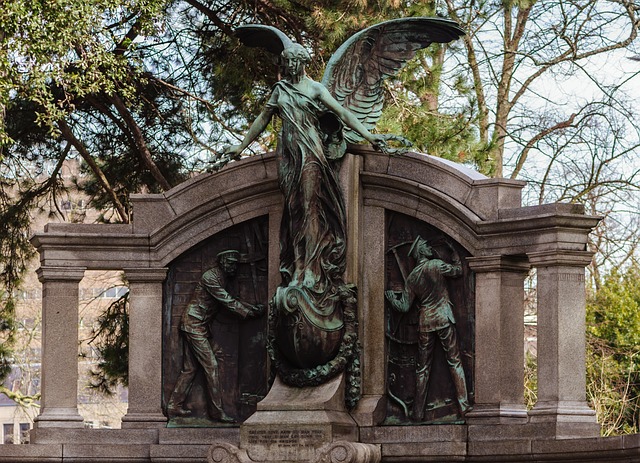By Tim Lambert
The Titanic is probably the most famous shipwreck of all time. The Titanic is remembered both because it sank on its maiden voyage and because of the terrible loss of life but also, perhaps because so many lives could easily have been saved (The Titanic did not have enough lifeboats for everybody).
The Titanic is Launched
In the 19th-century steamships sailed across the Atlantic. On them, the rich traveled in luxury. Second-class passengers traveled in comfort and third-class passengers (known as steerage passengers) traveled in spartan conditions. Most steerage passengers were emigrants hoping to make a new life in the USA. As well as being a passenger liner Titanic has a contract to carry post across the Atlantic so its full title was RMS (Royal Mail Ship) Titanic.
The Titanic was built in Harland and Wolff shipyards in Belfast. Work on building the Titanic began on 31 March 1909. The Titanic was launched on 31 May 1911. It was then pulled by tugs to the fitting-out basin and pieces of equipment like engines and boilers were added and cabins and dining areas were completed. Then on 3 February 1912, the Titanic was moved to a dry dock where propellers were added.
The Titanic had 3 propellers, a small central one, and 2 outer ones. To power the ship there were 29 boilers with 159 furnaces. Furthermore, the Titanic had 9 decks and 4 funnels. Titanic also had 3 anchors. The Titanic also had 15 watertight bulkheads dividing it into 16 compartments. In theory, the ship could still float even if 4 compartments flooded. However, on a fateful day, 5 compartments were flooded.
The Titanic was 269 meters long. It carried 20 lifeboats. However, there were not enough lifeboats for all on board. If the ship sank there was bound to be a heavy loss of life. From Belfast, the Titanic sailed to Southampton where it arrived on 3 April 1912. Tons of supplies were loaded on board. Food loaded onboard Titanic included 1,500 gallons of fresh milk and 600 tons of condensed milk. Titanic also carried 36,000 oranges and 16,000 lemons. Also, on board, the Titanic was 20,000 bottles of beer and 1,500 bottles of wine. The Titanic also had 40,000 eggs. Titanic also carried huge amounts of cutlery and crockery.
On 10 April 914 passengers entered the Titanic and it set sail the same day. The Titanic took on more passengers in Cherbourg then sailed to Queenstown (now called Cobh) in Ireland where it arrived on 11 April. The same day it set sail for New York.
On board the Titanic first-class passengers enjoyed a swimming pool, a gymnasium and a Turkish bath as well as bars. Cabins for the first-class passengers were spacious and very comfortably decorated. For second class passengers, conditions were not luxurious but they were still comfortable. Titanic had two libraries one for first-class passengers and one for second class. There were also two barbershops on board the Titanic, one for the first-class passengers and one for the second class. (The classes were kept strictly apart in those days). However many passengers were third class or steerage and for them conditions were austere.
The Titanic Sinks
Captain Smith was aware of the danger of icebergs and he plotted a new, more southerly course. However, he refused to reduce speed. It was a tragic mistake. If Titanic had reduced her speed the collision with the iceberg could have been avoided.
Then about 11.40 on Sunday 14 April, a lookout named Frederick Fleet spotted an iceberg ahead. He alerted the bridge. In charge was First Officer William Murdoch. He ordered the helmsman to turn the steering wheel hard to starboard, which would swing the bow of the ship to port (left). However, it was too late. The iceberg hit the Titanic a glancing blow on the starboard (right) side. (The best way to remember port and starboard is the saying ‘Is there any port left?’).
At 12.05 am Captain Smith realized the Titanic was sinking and he ordered lifeboats to be uncovered. However, the crew had not had a lifeboat drill since leaving Southampton and there was confusion on the deck with many people unsure what to do. Many lifeboats sailed away half empty. Only 706 people found seats in lifeboats. Many more lives could have been saved if each lifeboat carried its full complement.
At 2.18 am on Monday 15 April the lights on the Titanic went out and at 2.20 am on 15 April she slipped below the waves. As she sank Titanic split in two.
A radio message from Titanic was received by a ship called the Carpathia. She steamed to pick up survivors in lifeboats. (The crew of the Titanic also fired rockets to attract attention). Later ships from Halifax, Nova Scotia retrieved dead bodies from the sea.
Altogether 1,517 people died when the Titanic sank. Women were much more likely to survive the Titanic disaster. About 75% of female passengers survived but only 20% of male passengers did. About 87% of female crew members survived the Titanic but only 22% of male crew members did.
Subsequently, an inquiry was held in Britain into the disaster and it recommended that in the future all ships should carry enough lifeboats for all crew and passengers. It also recommended that all ships should have a radio and it should be manned 24 hours a day. Then in 1914, an international ice patrol was formed to look out for ice in the North Atlantic. Also in 1914, a monument to the engineers on the Titanic was erected in Southampton.

In 1958 a film was made about the Titanic called A Night To Remember. In 1997 it was followed by a film called Titanic. Meanwhile, the wreck of the Titanic was rediscovered in 1985.